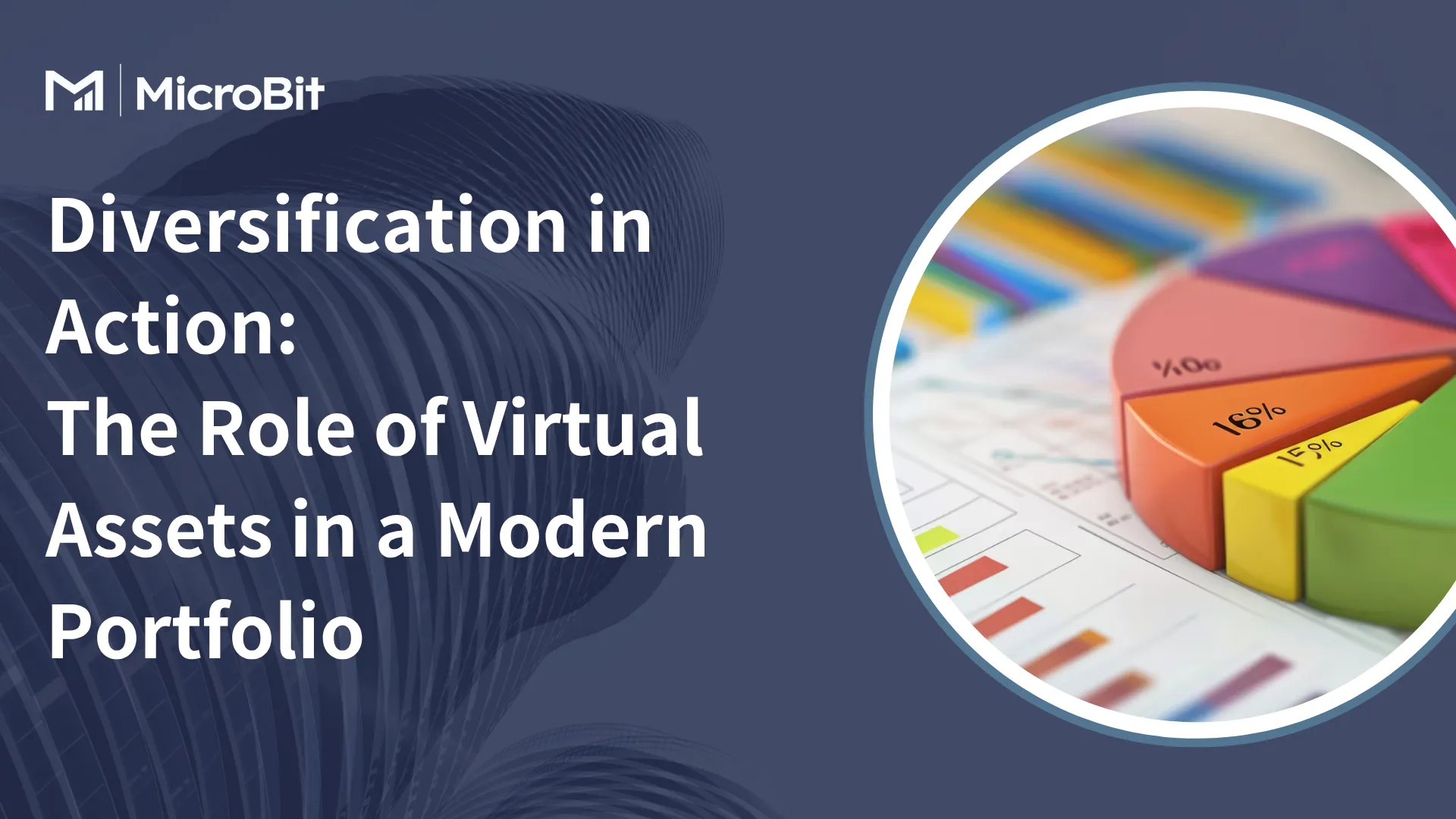Diversification in Action: The Role of Virtual Assets in a Modern Portfolio
As institutional investment strategies evolve, diversification is once again at the forefront of portfolio construction. Recent research by EY-Parthenon reveals that 83% of institutional investors increased their virtual asset holdings in 2025, while 87% currently hold or plan to invest in spot cryptocurrencies or ETFs1. These figures underscore a growing recognition: virtual assets are no longer just speculative instruments; they are emerging as a form of portfolio insurance in a world where traditional asset classes often move in tandem.
Rethinking the 60/40 Portfolio
The traditional allocation of 60% equities and 40% bonds offered a stable foundation for portfolio diversification. This model assumed that when equities underperformed, bonds typically acted as a buffer. However, recent market cycles have exposed limitations of this approach. During inflationary periods, both equities and bonds have declined simultaneously, disrupting the model’s protective structure.
The increasing correlation between equities and bonds has strengthened during market stress events*. As a result, portfolios are now more exposed to systemic shocks, highlighting the needs for assets that behave differently under stress.
Virtual Assets Don't Move in Sync—And That's the Point
Virtual assets such as Bitcoin and Ether represent diversification. They are non-correlated assets, meaning their price movements differ from those of traditional assets.
For example, Bitcoin's 10-year correlation with the S&P 500 has remained low averaging 0.17 over the past decade and declining toward zero in early 20252. Even lower correlations exist between virtual assets and fixed income, real estate or private equity. This was evident during the March 2023 regional banking crisis, when traditional banks and bonds declined sharply while Bitcoin gained over 40%, demonstrating its potential role as an alternative risk hedge.
The Mechanics of Modern Portfolio Insurance
While traditional assets often respond to central bank policies or economic cycles, virtual assets are influenced by entirely different drivers, such as user adoption, blockchain development, and regulatory policies in global markets*.
This technological foundation creates a natural hedge. Decentralized networks operate beyond the reach of centralized monetary policy, enabling virtual assets to respond to distinct market signals*. In an increasingly interconnected economy, this divergence provides investors an alternative investment solution.
How Much to Allocate? From Conservative to Strategic
Conservative investors might allocate 1% to 5% to virtual assets, a level sufficient to offer exposure without materially increasing risk. More strategic or innovation-driven portfolios might allocate up to 25%, depending on risk appetite, investment horizon and institutional mandate*.
A New Layer of Resilience
Effective diversification relies on assets that behave differently during adverse conditions. Virtual assets, by design, provide this independence. They are not immune to volatility, but their non-correlated nature makes them uniquely positioned to protect portfolios when traditional correlations break down.
Incorporating virtual assets as part of a broader diversification strategy introduces a modern form of portfolio insurance*. The value of virtual assets is more driven by technological innovation and global adoption*. In today’s rapidly shifting financial landscape, that distinction may prove invaluable.
Source
1. EY-Parthenon, https://www.ey.com/content/dam/ey-unified-site/ey-com/en-us/insights/financial-services/documents/ey-growing-enthusiasm-propels-digital-assets-into-the-mainstream.pdf, January 2025.
2. CoinTelegraph, https://cointelegraph.com/explained/cryptocurrency-vs-stocks-key-differences-explained, 21 April 2025.
* Note: Unless otherwise specified, some of the views and recommendations are compiled by MicroBit based on publicly available data and market experience.
---
Disclaimers
This material is produced by MicroBit Capital Management Limited ("MicroBit") and is intended for Hong Kong investors only. All content is for general information purposes and does not constitute an offer, solicitation, or recommendation to buy or sell any financial instruments, nor is it legal, financial, tax, or investment advice.
Investments involve risks. The value of investments can go up or down, and investors may lose some or all of their invested capital. Past performance is not a guarantee of future results. You should carefully consider your investment objectives and risk tolerance and seek advice from a professional financial advisor before making any investment decisions.
MicroBit does not guarantee the accuracy, timeliness, completeness, or reliability of the information provided. All materials are presented “as is”, without any warranties of any kind, whether express or implied, including but not limited to merchantability, fitness for a particular purpose, or non-infringement.
Securities and Futures Commission (SFC) authorization is not a recommendation or endorsement of a scheme, nor does it guarantee its commercial merits or performance. This material has not been reviewed by the SFC. Copyright © 2025 MicroBit Capital Management Limited. All rights reserved.


